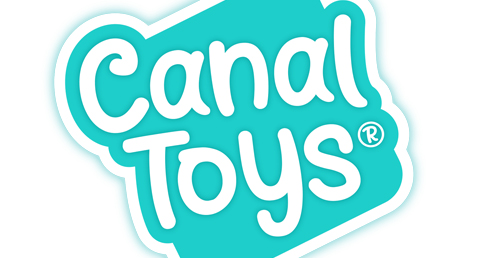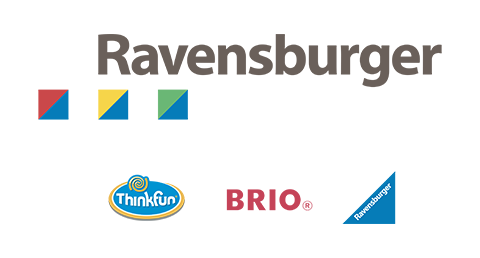For those who were too busy to read the Friday Blog last week, here it is again with some detailed examination of the latest developments at Amazon.
I apologise if I tempted fate last week by saying we were all hoping for a more ‘normal’ year. It seems that my old friends at Amazon have decided to do their best to keep everyone on their toes. The eCommerce giant has announced that it will be cutting out distributors and dealing directly with brand owners in the European market, effective almost immediately in some cases. Let’s not forget that Amazon has been operating on a similar basis in the USA since 2019, but the US market is markedly different to the European market when it comes to distribution set-ups.
As ever, the devil is in the detail and it will depend how the new policy is implemented in practice…but if I am reading this right, I foresee significant challenges ahead for some toy companies. One toy retailer summed it up rather succinctly: “That’s a ******* game changer.” Quite.
I have spent the past couple of days trying to get my head around potential implications for the toy community – which, to be frank, isn’t entirely straightforward, as I don’t profess to be an Amazon expert by any stretch of the imagination. It’s a very complex area, and it is entirely plausible that I may have misinterpreted certain consequences of Amazon’s plan – any feedback from toy companies as to how they view the announcement would be greatly appreciated, as I continue to build a picture of what this move might mean for the European toy community.
In the meantime, shall we start by assessing potential positives from the move? I gather some companies are delighted with the news – I guess some large brand owners may see the benefits of a closer working relationship with Amazon, although that will mean increasing resources to manage that. Some brand owners may feel that their brands have suffered from distributors creating inconsistent messaging and pricing, impacting the brand’s image on Amazon – this is their chance to own their brand messaging and pricing strategy outright. And, of course, Amazon will see this is a major opportunity to increase its margin and profit by cutting out the middle man.
However, if I am not mistaken, the current European distribution model which so many toy companies operate could now potentially be thrown into chaos. In some cases, companies will have to re-shape their entire distribution model – in under two months. Yes, that’s right – D-Day for the changes to start being implemented is the middle of April. The original email which was shared on social media quoted January 2024, but speaking to Amazon yesterday, I was told that different vendors have been given different switchover dates, starting in about eight weeks’ time.
Amazon has indicated that it will continue to source products from wholesalers and distributors if they’re the brand owner or if they have an agreement with the manufacturer to be the exclusive distributor. But exclusive distributor on what basis – globally? Pan European? Pan EU? UK?
This move will certainly impact the negotiation of distribution agreements going forward – I had already heard of negotiations breaking down when some brand owners had removed the Amazon account from distribution deals that were being discussed at the end of last year. Now that arrangement is presumably about to become the default setting.
Of course, Amazon isn’t the first retailer to attempt to cut out the middle man. For many years, major accounts – both multi-channel and specialist – have been trying to find a way to deal directly with factories / source companies rather than through an agent, wholesaler or distributor. In some instances, they may have even had a case that someone in the middle was taking 15% commission for doing very little to facilitate the deal or, more importantly, manage the ongoing trading relationship. But, in many other cases, the middle- man plays a key role in ensuring everything runs smoothly and that any problems are ironed out to everyone’s satisfaction, so that trading is maximised for both parties.
Of course, Amazon doesn’t always see this contribution at close quarters, as it adopts a digital first, less personal relationship management strategy than many other retailers. Next year, perhaps it will find out just what many middle-men brought to the partnership, especially in the case of smaller vendors.
There are lots of grey areas, and many practicalities to evaluate. What will happen to suppliers which are both a brand owner and a distributor? There are lots of those – do you have to be one or the other, or can you be both? Will the new mega-warehouses be able to cope with a greater number of small transactions? If not, will Amazon be able to commit to 20 or 40 foot containers where it is currently ordering less than pack quantities (rhetorical question) – or will those products just fall by the wayside?
For many distributors, the logical move would appear to be switching to 3P (Seller Central), but will that be a viable strategy for everyone? Plus, there will almost certainly be a knock-on impact on the affiliate link side of things, which has a direct impact on mainstream media coverage. And what about international brands with regional distributors? They may not all have the capability, resources – or even the inclination – to handle Europe on their own from the US or the Far East.
And how does the UK’s non-EU, non-single market status play into all of this? Our editorial team spoke to one prominent Irish independent retailer this week for our March Talking Shop section, and he admitted that he is buying more product from European suppliers and less from UK suppliers, due to the post-Brexit complications. In his own words: “Previously around 80% of our goods came from the UK and 20% from Europe, but Brexit has changed all of that. We’ve had horrendous problems ordering from the UK – we recently had a delivery that took five months to arrive, plus there are now so many added costs.”
One thing is crystal clear: the Amazon development has been the story everyone has been talking about this week. Indeed, Amazon’s press office got in touch with us yesterday to issue an official statement that it asked us to share, in order to help clarify the timeline. Anything I’ve missed (and there will be lots, I’m sure), do feel free to let us know, and we will do our best to keep the European toy community up to speed with proceedings. It’s what we do.















